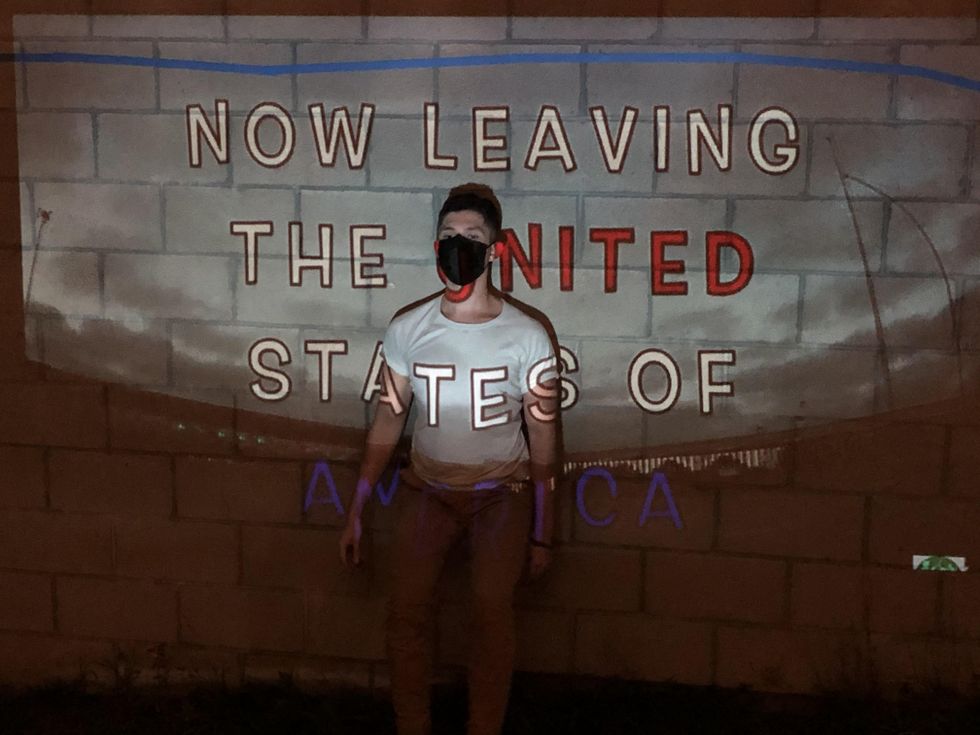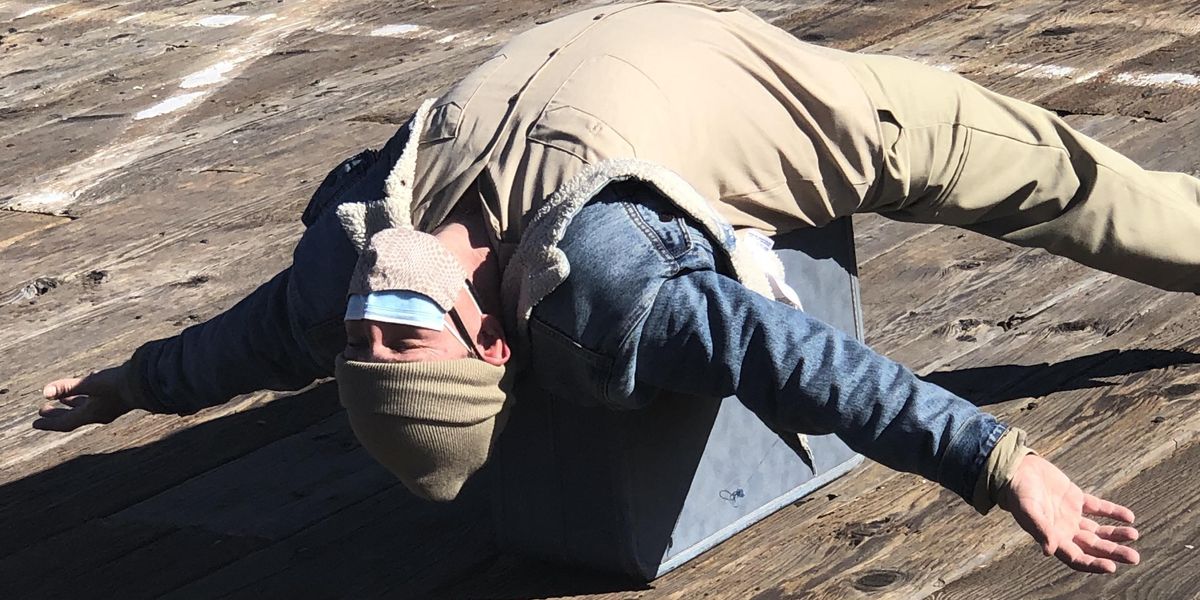Writing Dances, From Inside a Prison
Around this time last year, when the pandemic shut down dance studios and theaters, many artists quickly adapted to rehearsing via Zoom. But incarcerated movers at the California Rehabilitation Center, a medium-security state men’s prison in Norco, California, had no access to Zoom, and when the prison locked down, the men had to spend nearly all their time in their bunks.
“The prison kind of said, ‘Well, I guess we’ll see you when this is over. How could you do a dance class through correspondence?'” says choreographer and Scripps College educator Suchi Branfman, who’s been working with incarcerated dancers in Norco since late 2016 through her project Dancing Through Prison Walls. “I said, ‘Just give me some time.'”
Branfman sent prompts and examples of written dances to the dancers she’d been working with before the pandemic, and invited them to start writing choreography. “We are not without a legacy of written dances. It’s not usually done out of necessity, but in this context it was very generative,” she says.
About 10 of the dancers started sending dances to Branfman, varying from move-by-move instructions to broader narratives. For example, Terry Sakamoto Jr. wrote the story of his wife coming from Mexico to visit him at the prison every month. “It’s a very detailed, beautiful story, starting with her waking up in the morning in Mexicali. And she starts by having a cup of coffee and turning on Pavarotti before she starts her journey. That’s the beginning of the dance,” says Branfman.
Branfman encouraged the dancers to see opportunity in these imagined dances. “To choreograph this way is liberatory,” she says. “You have no financial restraints. You don’t have to rent a theater or worry about permits. You don’t have to worry about costuming. You don’t even have to worry about gravity. And a lot of people really seized on that.”

Irvin Gonzalez in Undanced Dances Through Prison Walls During a Pandemic
Courtesy Branfman
Six of these dances are highlighted in a dance film, Undanced Dances Through Prison Walls During a Pandemic, with artistic direction by Branfman and cinematography by Tom Tsai. The dances, choreographed by Brandon Alexander, Richie Martinez, Landon Reynolds and Terry Sakamoto Jr., between March and May of 2020, were interpreted on the outside by Bernard Brown, Jay Carlon, Irvin Gonzalez, Kenji Igus, Bri Mims and Tsai, all choreographers who had previously joined Branfman inside the prison. Martinez, who was released from prison last summer, performs and narrates his own dance. Other dances are narrated by formerly incarcerated movers Marc Antoni Charcas, Ernst Fenelon Jr. and Romarilyn Ralston.
The collaboration and sense of community among artists inside and outside the prison has always been a major element of Branfman’s project. “It has been impactful for those of us coming in from what folks inside call the ‘free world,’ as well as the folks inside the building,” says Branfman. “As much as we can, we try to replicate the studio environment, and create a sense of being able to move freely. People on the inside exist under a constant state of surveillance, with extremely limited movement, lack of contact and lack of free space. But we create a community space, and we all cherish it.”
Incarcerated people have been at great risk during the pandemic. California prisons in particular have reported staggering numbers of COVID-19 cases: at least 49,195 cases and 216 deaths. Branfman says she hopes the project will encourage audiences in the free world to think about their complicity with mass incarceration.
“These dances, as they’re performed, are also part of a conversation about the ways that we are all implicated in the prison industrial complex. For example, here in California with the massive wildfires, incarcerated firefighters are containing those fires. And we’ve learned that through our guys in the studio, who are gone for a month because they’re out fighting wildfires. We have incarcerated people who are getting paid a dollar an hour, or less, to fight the fires, and when they get out, they can’t get jobs as firefighters because they have a record,” says Branfman.
There are two opportunities for audiences in the free world to see these dances: on April 2, at 6:30 pm Pacific, presented by Dancing Through Prison Walls, and on April 16, at 6:30 pm Pacific, presented by 18th Street Arts Center. Branfman hopes that in the fall, she’ll be able to return to the prison to screen the film for its incarcerated choreographers or even have the opportunity to perform the dances live.




